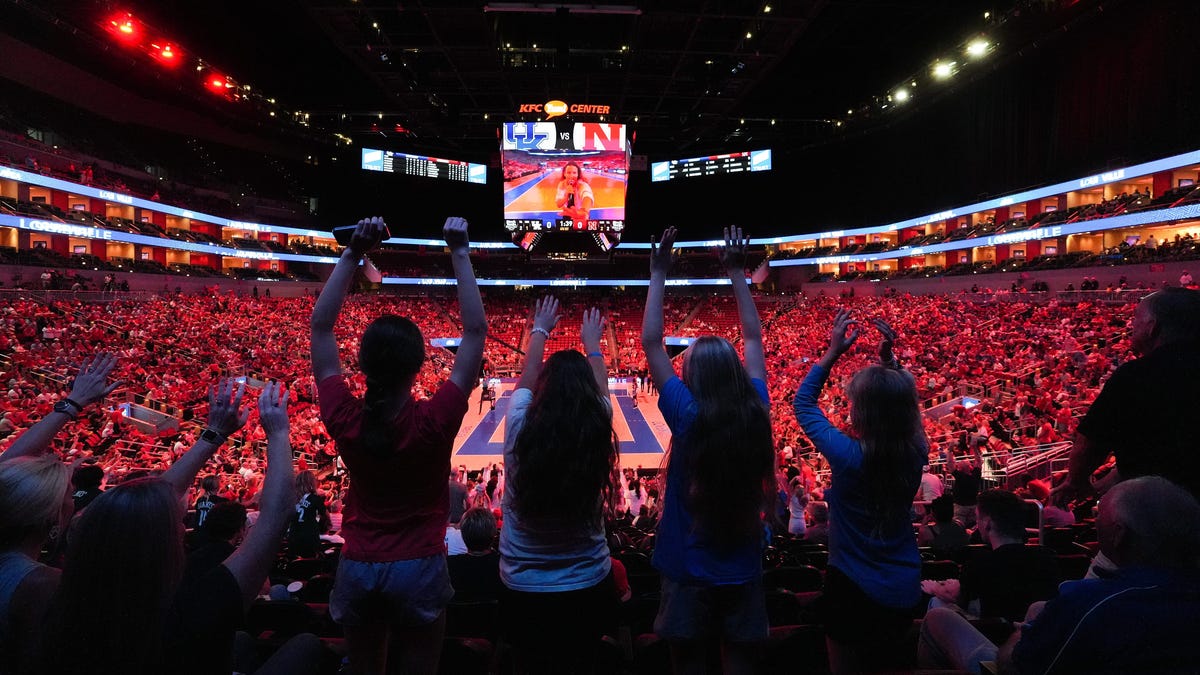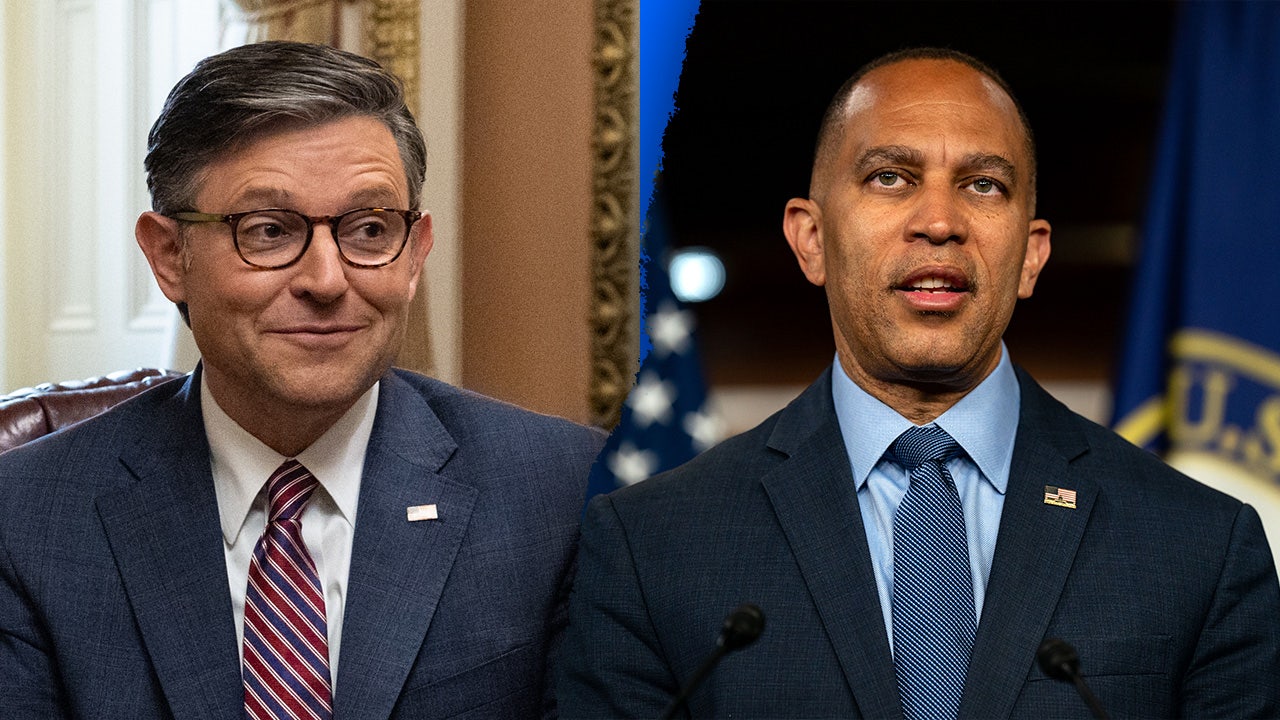Ohio
Buckeyes to Browns: Luke Wypler, Dawand Jones excited to continue football careers in Ohio

BEREA, Ohio — For years there’s been a perception within the fan base that the Browns just don’t draft players from the Ohio State Buckeyes. It’s something that Ohio State players have even talked about.
This year, however, general manager Andrew Berry and his front office made it clear they do—drafting two players from the Buckeyes—offensive tackle Dawand Jones and center Luke Wypler—and signing two more as undrafted free agents—defensive backs Ronnie Hickman and Tanner McCalister.
While they aren’t Northeast Ohio natives, this state has become a home for them over the years they played for Ohio State. Wypler said it felt like it was meant to be.
“I’ve been telling people this great state just didn’t want to give me up yet. So I’m really happy to be here and still be here, so can’t complain,” he said.
Wypler, originally from right outside of New York City, spent three seasons in Columbus. For him, his favorite part of Ohio has been the lack of New York traffic.
“I got really used to 15 miles being 15 minutes. Growing up, being right outside New York City, three miles usually may take an hour, if you’re lucky,” Wypler said. “It took me a little while to kind of change the way I thought about rush hour. So just those little things I got really used to and I love about Ohio.”
The center’s family was thrilled to see Wypler land in Cleveland, and it was even a few hours closer to New Jersey where they’re located. Keeping his roots in Ohio allows the family to keep planning which games they’ll be able to come out and support Wypler at this season.
But his extended family—the scarlet and gray fanbase—may be more excited. A large crossover of Buckeye and Browns fans now get to watch the offensive lineman they cheered for over three seasons in Columbus earn a spot on their NFL team in Cleveland.
“I already felt a lot of love coming from those Buckeye-Browns fans, especially when I’ve been out in Columbus the last couple of weeks after the draft. Everyone just coming up saying congratulations,” Wypler said. “I already knew that the Buckeye fan base, how big it is, and now seeing how big the Browns fan base is, it’s just one great program to another.”
Wypler isn’t alone in his love for Ohio.
Jones, the Browns’ new 6-feet-8-inch, 375-pound tackle, has been drawn to Northeast Ohio for years. In fact, before he went a bit south to play football for the Buckeyes, he nearly played basketball in this area.
“I almost went to Kent State. Coach [Rob Senderoff], he really wanted me bad. It came to last week and he said, ‘Either you’re going to commit or I’ve got to snatch your offer.’ I told him, ‘You’re going to have to snatch it. I just want to take this chance on football.’”
It wasn’t just Kent State that Jones visited and nearly attended—he also visited Cleveland State, scouted out by their basketball program.
In the end, all worked out and Jones ended up in Ohio anyway, playing a different sport in a city further south. Still, getting to remain in the state he made a home in college was something Jones is grateful for and almost couldn’t believe when he got the call on draft day.
“Surreal. Got the call and I’d seen a 216 number. I said, ‘I know where I’m going.’ And so it was cool to just tell my buddy, ‘You see the 216 number,’ and it was just cool to tell them I’m going to the Browns,” Jones said.
Jones and Wypler, as well as Hickman and McCalister, join cornerback Denzel Ward and defensive tackle Tommy Togiai as Buckeyes turned Browns. It’s a growing squad with familiar ties—and it’s a trend they’re looking to continue by impressing on the field.
“We’re just excited to be together. It’s just that familiarity. We all have our brotherhood that we’ve had for years. Now, playing two years together, coming here,” Wypler said.
Prompted by the response ‘A scarlet and gray takeover,’ Wypler laughed and said “Yeah seriously, a hostile takeover.”
The new Browns, former Buckeyes, are looking forward to proving themselves on the field during rookie minicamp, OTAs, and into training camp, hoping to make the fans of orange and brown just as happy as when they were playing in Columbus.
“Ohio just goes hard. You know, they love football,” Jones said.
Watch live and local news any time:
News 5 Now Saturday Afternoon
Download the News 5 Cleveland app now for more stories from us, plus alerts on major news, the latest weather forecast, traffic information and much more. Download now on your Apple device here, and your Android device here.
You can also catch News 5 Cleveland on Roku, Apple TV, Amazon Fire TV, YouTube TV, DIRECTV NOW, Hulu Live and more. We’re also on Amazon Alexa devices. Learn more about our streaming options here.

Ohio
Opal Lee returns to Fort Worth after Ohio hospitalization
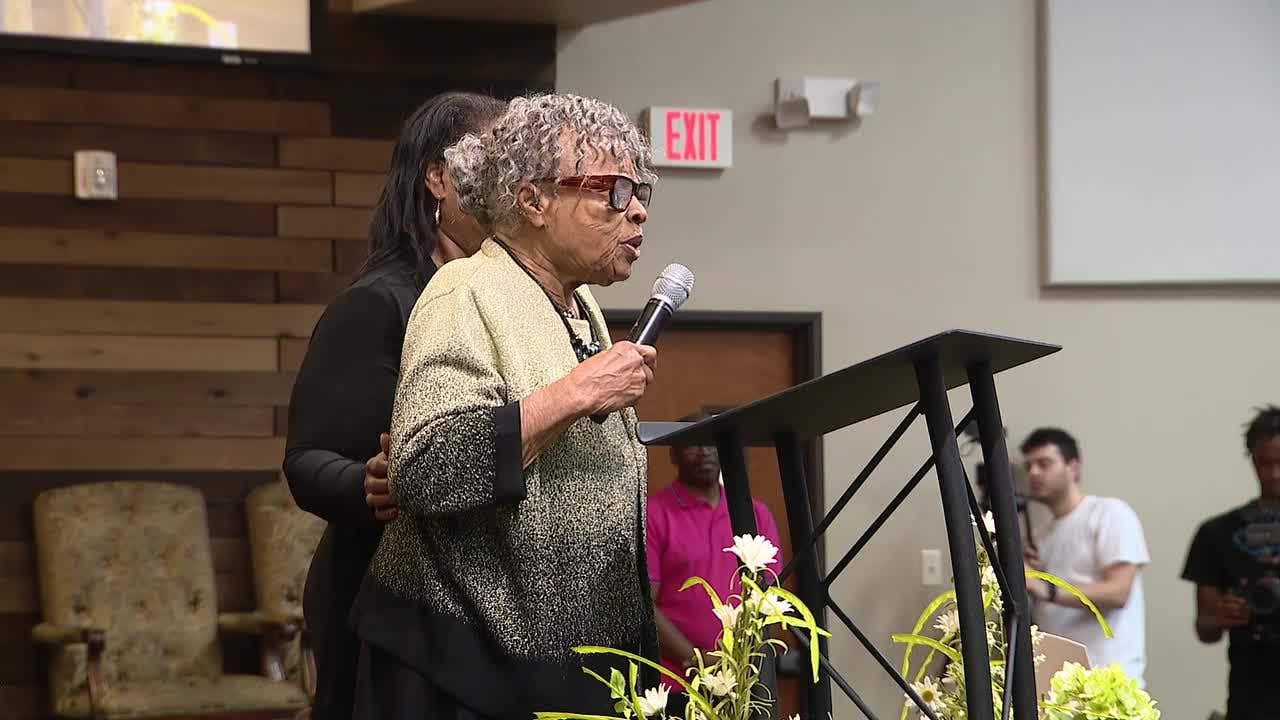
FORT WORTH, Texas – Opal Lee, the grandmother of Juneteenth, is back in Fort Worth after being admitted to the hospital in Ohio.
Opal Lee returns home
The 98-year-old returned home from her out-of-state hospital stay on Monday evening.
Dionne Sims, Lee’s granddaughter, says the 98-year-old has been resting, reading and staying in bed.
For now, she is not doing any interviews to give her time to rest.
What they’re saying:
“I think one of the things she is most encouraging young people to do is to take Juneteenth, take the baton and go forward. you’ll hear that, she’s always said it. I think we just need to pay attention to what she said. She always said It’s not a me thing. It’s a we thing,” said Sims.
Kamala Harris calls Opal Lee
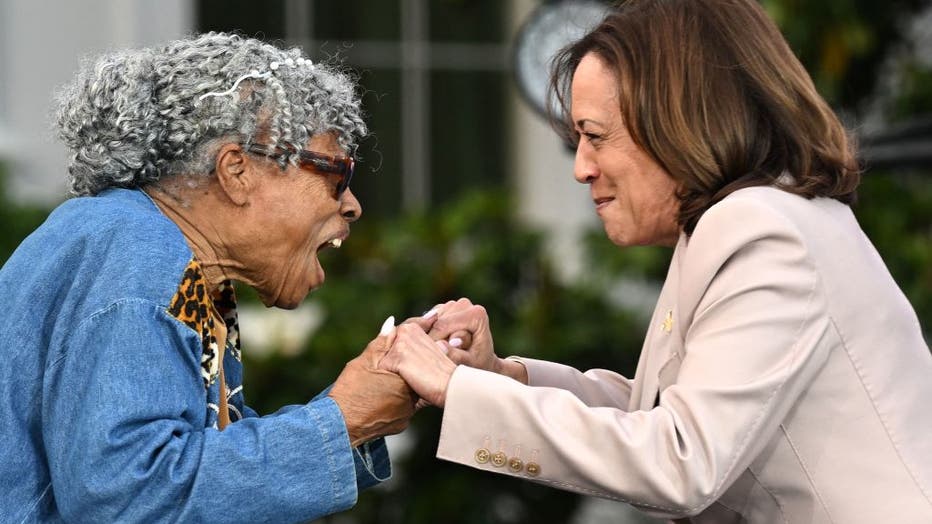
US Vice President Kamala Harris (R) greets US teacher and activist Opal Lee prior to a Juneteenth concert on the South Lawn of the White House in Washington, DC, on June 13, 2023. (Photo by ANDREW CABALLERO-REYNOLDS/AFP via Getty Images)
There is one call that Lee did take.
Former vice president Kamala Harris called after she heard about her hospital stay.
What they’re saying:
“She had a big smile on her face, right. To think that the former vice president, would call to check in on her, really, it made us feel special. We all know that she is, but I don’t think she realizes she is,” Sims said.
Walk for Freedom
Lee’s health is leading to some changes for her Juneteenth festivities, including her Walk for Freedom on June 19.
She will still take part in the walk, but will be in a golf cart.
What they’re saying:
“It was always the plan to have my grandmother in a golf cart, one so we can finish in a timely manner, but it’s just time,” Sims said. “It is named for her but we definitely don’t want to wear her out, so I think that is the name of the game, to keep her here as long as possible.”
The Source: Information in this article comes from an interview with family members of Opal Lee.
Ohio
Ohio Patrol helicopter video captures men throwing package over youth prison fence

Infrared cameras mounted to a state patrol helicopter recorded two men chucking a package over the fence at an Ohio youth prison
Troopers tracks suspects seen throwing package over youth prison fence
An Ohio Highway Patrol helicopter caught two men throwing a package outside the Circleville Juvenile Correctional Facility.
- Two men were caught on infrared camera throwing a package over the fence at Circleville Juvenile Correctional Facility.
- The package contained THC vape pens, cell phones, and an external battery.
- Several individuals, including a former DYS deputy superintendent, face charges related to the incident.
- The former DYS employee allegedly purchased the contraband and had inappropriate relationships with incarcerated teens.
Infrared cameras mounted to an Ohio Highway Patrol helicopter recorded two men throwing a package over the fence at a state juvenile prison and then running through a field to evade capture.
The footage shows how troopers in the air spotted and tracked the suspects, relaying information to their colleagues on the ground. The bodies of the men glow white-hot in the footage, which allowed troopers to follow them even as one tried to hide in the woods.
Youth prison officials monitoring phone calls picked up on a plan to throw drugs over the fence at Circleville Juvenile Correctional Facility the night of Nov. 8, 2024. The Ohio State Highway Patrol’s aviation unit, on the ground troopers and DYS officials caught Korrell Bush allegedly throwing a package containing 15 THC vape pens, three cell phones, phone cables and an external cell phone battery over the fence.
Bush, now 21, has pleaded not guilty to illegal conveyance and receiving stolen property charges. His trial before Pickaway County Judge Matthew Chafin is scheduled for Sept. 18.
James Wilson and Juano Peyton, both now 19, pleaded guilty to complicity to illegal conveyance and Brandon Mitchell, 20, has a plea hearing scheduled for June 11.
A former Ohio Department of Youth Services deputy superintendent is scheduled to go on trial June 16 in the case. Renee Depalo, 39, of Massillon, has pleaded not guilty to complicity to convey contraband into a state prison, which is a third-degree felony.
The Ohio Department of Youth Services investigated allegations that Depalo had inappropriate relationships with incarcerated teens, including Wilson. Depalo, who worked at Indian River Juvenile Correctional Facility where Wilson had been previously incarcerated, resigned her state job May 18, 2024.
According to investigations conducted by DYS and the patrol, Depalo purchased the vape pens and cell phones at Wilson’s direction and provided them to Bush. Investigators also reported that Depalo and Bush exchanged text messages, though Depalo told troopers that she didn’t know the items were going to be thrown over the fence into the youth prison.
Ohio operates three youth prisons for children adjudicated for offenses that would be felonies if they were adults.
State government reporter Laura Bischoff can be reached at lbischoff@gannett.com and @lbischoff on X.
Ohio
Facing Public Pushback, Ohio House Committee Says More Changes Are Coming To State’s Marijuana Overhaul Bill

An Ohio House committee took hours of public testimony on Wednesday about a bill that would make sweeping adjustments to the state’s adult-use marijuana legalization law, which was approved by voters in 2023. Amid overwhelming opposition from commenters and advocacy organizations, members said further amendments to the plan are forthcoming.
Already the House Judiciary Committee has taken steps to soften the restrictive bill, SB 56, in response to public pushback. Changes approved at a hearing late last month, for example rolled back some of the strict limits included in a verson of the measure passed by the Senate in February, including a criminal prohibition on sharing marijuana between adults on private property.
At the latest hearing, Rep. Jamie Callender (R), a longtime supporter of cannabis reform, reassured speakers that their concerns are being heard and further amendments are forthcoming.
“Thank you all for your participation,” Callender said. “As a result of that, there was a substitute bill put in last week that addressed a couple of the issues you talk about. And one of the reasons that it is not up for a vote today is we are still negotiating and working on some amendments to address several of the other issues.”
“The very specific issues you addressed have been being worked on or will be addressed in the next week or two,” he continued. “So for all of you that are here testifying, I want to thank you. You’ve made a difference. And it’s going to make a much better product. And I’m optimistic that you may not be perfectly happy, but you’re going to say, ‘You know, this is OK,’ when it comes up.”
Drug reform advocates have criticized both SB 56 and its House counterpart, HB 160, as restrictive measures that would undermine the will of voters who passed the state’s legalization law, Issue 2.
New changes already adopted, according to comments made at last week’s hearing on the bill, would remove the legislation’s earlier criminal penalty for sharing marijuana or intoxicating hemp products among adults, provided that the sharing takes place on private property.
Certain outdoor concert venues would also be exempt from laws against open consumption provided they have separate smoking and vaping areas.
The committee amendment also removed a provision that would have created a mandatory minimum sentence for someone caught consuming marijuana in the passenger seat of a vehicle.
Notably under the amended bill, THC-infused beverages containing up to five milligrams of THC could be carried in stores statewide rather than just in dispensaries. A $3.50 per gallon tax would be levied on THC beverages.
A separate 10 percent tax on marijuana products in the bill would also apply to intoxicating hemp products.
While especially high-potency products would still be forbidden under the amended bill, regulators at the Division of Marijuana Control could by rule increase the allowable potency above the initial 70-percent THC cap.
Licensed dispensaries would also be able to sell and transfer marijuana to other license holders.
Other changes increased the amount of tax revenue going to municipalities that host cannabis businesses, upping it to 25 percent of state cannabis revenue for a period of seven years. That’s a higher amount than was contemplated in any other marijuana bill this session.
Despite the recent changes, opponents nevertheless lined up at Wednesday’s hearing to call for further adjustments.
The advocacy group Marijuana Policy Project (MPP), which has been critical of the bill since its introduction, said in written testimony that it continues “to strongly opposed the bill as currently drafted,” asserting that the proposal would “punish adults for innocuous conduct that is legal for alcohol.”
For example, MPP says the bill in its current form would still prohibit adults from sharing homegrown marijuana, with sharing only allowed of products purchased from a state-licensed storefront.
Sharing would also be permitted only at a person’s primary residence, MPP noted, meaning that “people visiting friends couldn’t share cannabis at their friends’ house,” people camping couldn’t share an edible and “people visiting from out-of-state and homeless individuals could not share cannabis anywhere.”
It could also put drivers at risk of misdemeanor charges for carrying lotions, edibles or other infused products unless those products are stored in the trunk or similarly inaccessible location, the group said.
“This is nonsensical for lotions and tinctures,” MPP said in its written testimony. “It also doesn’t make much sense for edibles, which don’t even take effect for an hour and which would in no way impair a driver if a passenger used them.”
The group’s testimony also noted that SB 56 in its current form still eliminates elements of legalization that voters themselves approved, such as support for social equity and jobs programs.
“It also removes product types and opportunities for new businesses, eliminates the social equity and jobs program, strips away funding for expungement and legal aid, sunsets and reduces host communities’ revenue share, and eliminates the ability of cities who may opt in late to have local dispensaries,” MPP said of the bill.
Cat Packer, director of drug markets and legal regulation for the group Drug Policy Alliance and a practitioner in residence at Ohio State University’s drug enforcement and policy center, told the panel on Wednesday that “it seems as if the legislature is intent on disregarding the will of Ohio voters.”
First, she recommended lawmakers “eliminate any new criminal penalties that have been established by these bills.”
“Every single new criminal penalty needs to be struck out, otherwise we don’t actually understand what legalization means,” Packer said.
She also called out legislators for gutting the voter-approved social equity and jobs program.
“If it’s the word ‘equity’ that concerns you, please, by all means, rename the program,” Packer urged. “But please do not abandon Ohioans and Ohio communities, because that is what will happen if we abandon abandon this program.”
“We should be creating opportunities for small and minority businesses,” she added. “It’s not just minority businesses that were to be provided a pathway towards inclusion through this program, but veterans and persons with disabilities. You all would be disregarding those folks as well.”
—
Marijuana Moment is tracking hundreds of cannabis, psychedelics and drug policy bills in state legislatures and Congress this year. Patreon supporters pledging at least $25/month get access to our interactive maps, charts and hearing calendar so they don’t miss any developments.
Learn more about our marijuana bill tracker and become a supporter on Patreon to get access.
—
Packer also said host communities should get a share of revenue not just for a seven-year period, as the latest version of the bill dictates, but “into perpetuity.”
“Where is the money? Where is it?” she said. “It’s ours. It belongs to Ohio communities.”
In March, a survey of 38 municipalities by the Ohio State University’s (OSU) Moritz College of Law found that local leaders were “unequivocally opposed” to earlier proposals that would have stripped the planned funding.
Rep. Brian Stewart (R) noted at the previous committee hearing that the latest provision around host community funding was the most generous lawmakers had offered all session.
“The Senate’s version of the bill was zero percent. The governor’s introduced version of the bill was zero percent,” he said, adding that HB 160 itself initially set a 20-percent allocation for five years. “We have increased that to 25 percent over seven years.”
Stewart said he hoped the Senate would either concur with the changes or that lawmakers could “maybe have a short conference committee” to hammer out any remaining details.
Callender at the time said he hoped to see more amendments made. Following Wednesday’s hearing, those appear to be in the works.
Meanwhile in Ohio, adults are now able to buy more than double the amount of marijuana than they were under previous limits, with state officials determining that the market can sustainably supply both medical cannabis patients and adult consumers.
Effective Wednesday, adults can purchase up to 2.5 ounces of flower cannabis per day—a significant increase compared to the prior daily transaction limit of one ounce. The change will make it so consumers could buy marijuana in an amount that matches the 2.5 ounce possession limit under state statute.
A Department of Commerce spokesperson told Marijuana Moment on Tuesday that “back when the non-medical program came online, there were lower limits on non-medical sales, which was primarily to help ensure there was an adequate supply for medical patients.”
“A subsequent review of the available inventory data supports this increase adjustment up to the statutory limits identified in the statute,” they said.
A budget measure from Gov. Mike DeWine (R) is also a potential vehicle for changes to the state’s marijuana law. As proposed, it would remove local tax allocations of medical marijuana revenue and double the state cannabis tax rate to 20 percent—though legislative leaders have said they will be removing the tax increases.
Meanwhile, DeWine in March announced his desire to reallocate marijuana tax revenue to support police training, local jails and behavioral health services. He said funding police training was a top priority, even if that wasn’t included in what voters passed in 2023.
Ohio’s Senate president has also pushed back against criticism of the Senate bill, claiming the legislation does not disrespect the will of the electorate and would have little impact on products available in stores.
Separately in the legislature this month, Sens. Steve Huffman (R) and Shane Wilkin (R) introduced legislation that would impose a 15 percent tax on intoxicating hemp products and limit their sales to adult-use dispensaries—not convenience stores, smoke shops or gas stations
DeWine has repeatedly asked lawmakers to regulate or ban intoxicating hemp products such as delta-8 THC.
GOP Congressional Committee Proposes Ban On Hemp Products With THC That Advocates Say Would Have ‘Devastating’ Impact On Industry
Photo courtesy of Chris Wallis // Side Pocket Images.
-

 News1 week ago
News1 week agoVideo: Faizan Zaki Wins Spelling Bee
-
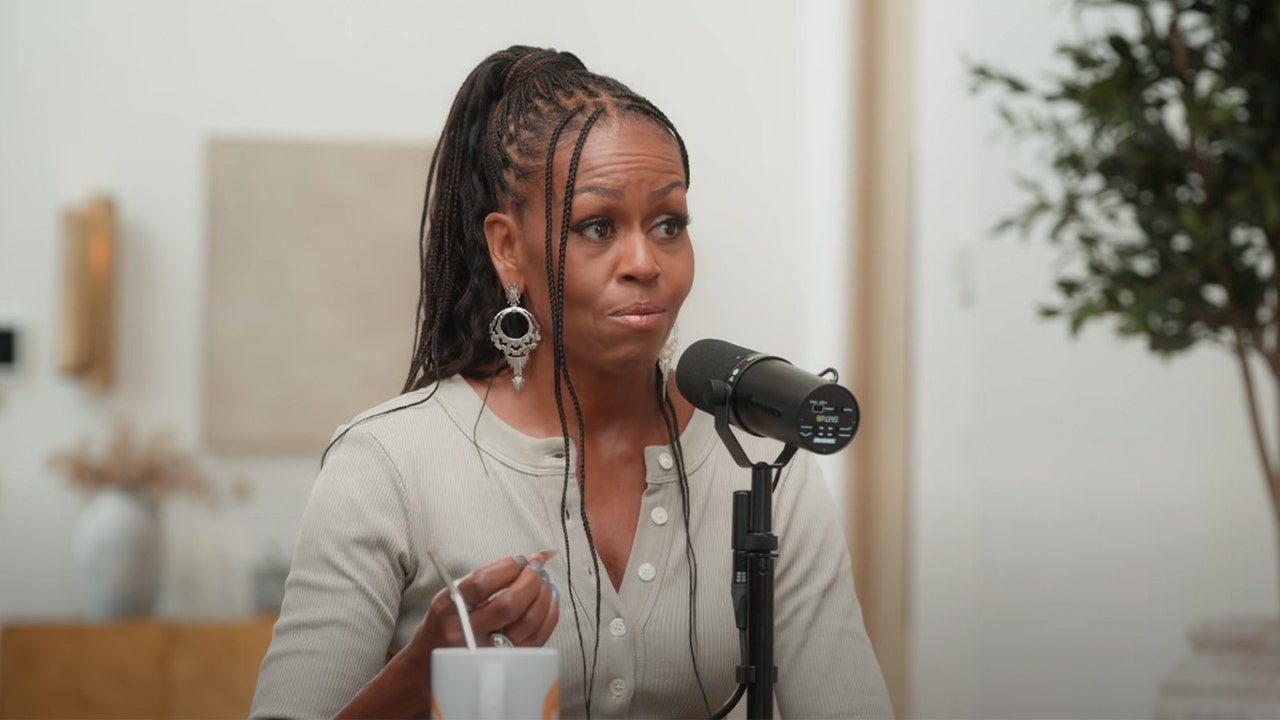
 Politics6 days ago
Politics6 days agoMichelle Obama facing backlash over claim about women's reproductive health
-

 News1 week ago
News1 week agoVideo: Harvard Commencement Speaker Congratulates and Thanks Graduates
-

 Politics1 week ago
Politics1 week agoMusk officially steps down from DOGE after wrapping work streamlining government
-

 News1 week ago
News1 week agoPresident Trump pardons rapper NBA YoungBoy in flurry of clemency actions
-

 Technology1 week ago
Technology1 week agoAI could consume more power than Bitcoin by the end of 2025
-

 Business1 week ago
Business1 week agoSix Flags to cut 135 jobs at Knott’s, Magic Mountain and other California parks
-

 Technology1 week ago
Technology1 week agoSEC drops Binance lawsuit in yet another gift to crypto
